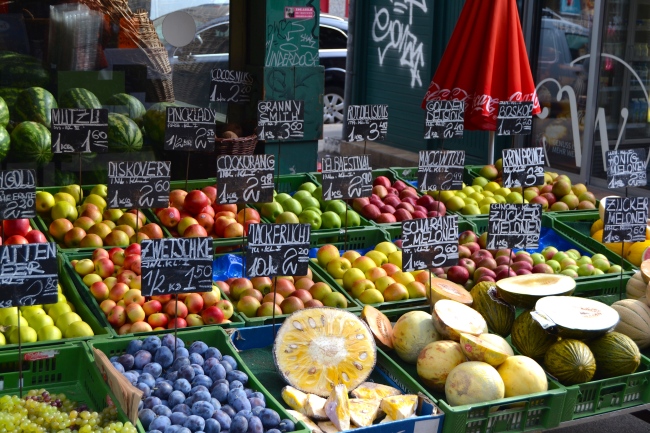Eating By Color: A Wintry Rainbow Soup
At first it might seem a little fantastical. You might feel a little silly walking through the produce aisle, portioning your fruits and vegetables according to their pigment. But there is some evidence to substantiate this approach, and in the end if painting by numbers makes the masterpiece, then I’m all for it: after all, nature isn’t really big on “originals’.
Last night I read poems at a cafe in Bushwick. Emerging out of the subway, the snow was assaulting and powdery like bags of flour thrown into my face. One New Yorker told us before we arrived that you live or die according to how close your apartment is from the subway. I thought he was being dramatic. Turns out I now understand.
At the end of the night, I ducked into the subway, relieved for the brief moment of respite. Riding the three stops back to my apartment I remembered the wintry rainbow soup my family would make, and knew I’d be cheating myself if I didn’t set about making it immediately.
The version presented here rests heavily upon what produce I’ve been able to procure in my neighborhood. But more important than any one ingredient, is the color of the soup. There must be white, green, yellow, orange, and purple to make this soup right. There’s a hidden logic this criterion that some may be interested in parsing. For me, I’m too busy eating.
A note on the preparation: your favorite vegetable stock will do great. Depending on how much time you have, spending some extra time will make this soup so much better. I prefer making my own stock, which can be easily done using the odds and of vegetables from a week’s worth of cooking, roasted and seasoned according to your liking, and simmered in a pot of water for at least an hour. The key is to roast the vegetables first. Believe me, it’s worth it. For this stock I added potatoes, celery, asparagus, zucchini, carrots, and onions.
Ingredients:
- ¼ tablespoon of unsalted butter
- 1 medium onion, chopped
- 2 celery stalks, chopped
- 6 cloves garlic, pressed
- 2 carrots, chopped
- 1 parsnip, chopped
- 1 small red beet, chopped
- 6 cups of vegetable broth
- 1 cup of kale, chopped
- Salt, pepper, sage, turmeric, to taste
Directions
In a large pot, sauté onions on medium low heat until translucent. Add garlic and increase heat to medium. Add celery, carrots, beets, and parsnips and cook for 5 minutes.
Add broth or stock to the vegetables. Simmer covered on low for at least an hour.
Add kale and simmer for three minutes. Add salt, pepper, sage, and turmeric to taste.














